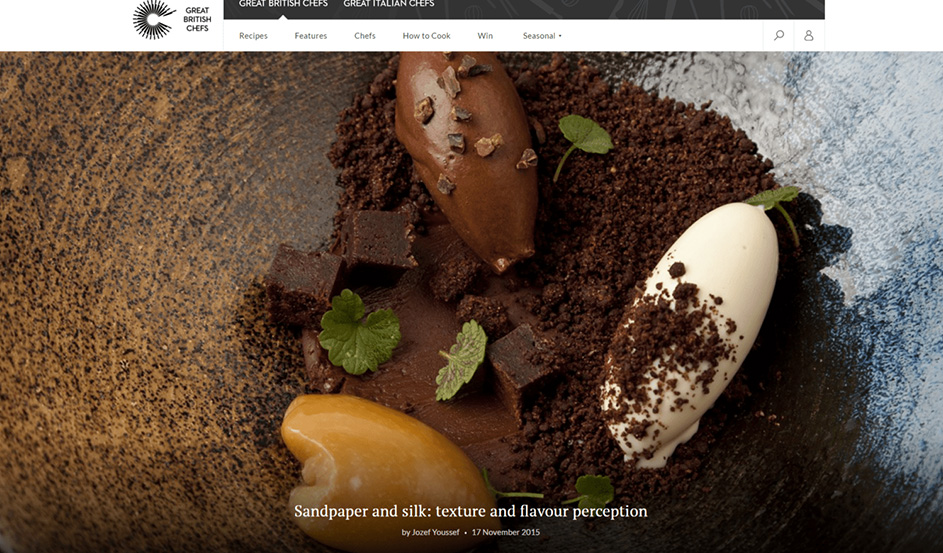
ARTICLE BY JOZEF YOUSSEF ON GBC – SANDPAPER AND SILK: TEXTURE AND FLAVOUR PERCEPTION
SANDPAPER AND SILK: TEXTURE AND FLAVOUR PERCEPTION
by Jozef Youssef 17 November 2015
Chef Jozef Youssef takes a look at how texture can affect flavour perception and the experience of eating.
DOES TEXTURE MATTER?
Let’s start out with something very simple to help us answer this question; what makes a crisp, a crisp? Think of your favourite crisp brand. Flavour will factor into your choice, but is that all that makes them your favourite? For many, it is the size, thickness (or thinness) and the mouthfeel – the crunch in the mouth (which also belongs in the sound domain) – which, along with a particular flavour, make up the characteristics of their favourite crisps. Dare we say the texture, weight (and sound) of the packet itself may even be a characteristic which endear us to our favourite brand?
Think about throwing all the elements of your next Sunday roast in a blender before serving it to your family and friends. If texture was irrelevant to flavour, those beautiful crispy potatoes, rare beef, perfectly cooked vegetables and home-made gravy would be just as delicious after a good blitz. Clearly we have certain associations, perceptions and preferences for the physical attributes of food which go beyond just how they look and taste.
So far so simple. Everything I have mentioned above is hardly mind blowing, nor is it really that experimental, but it is important to highlight the role that texture plays in the simplest terms. I’m now imagining that perfect crème brûlée with a glass-like sugar disc waiting to be shattered into velvety custard. The texture is a big part of what makes it a great dish – a disappointing top equals dissatisfaction.

